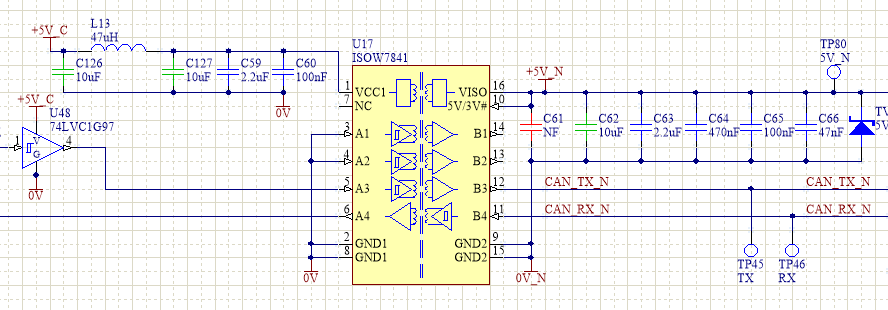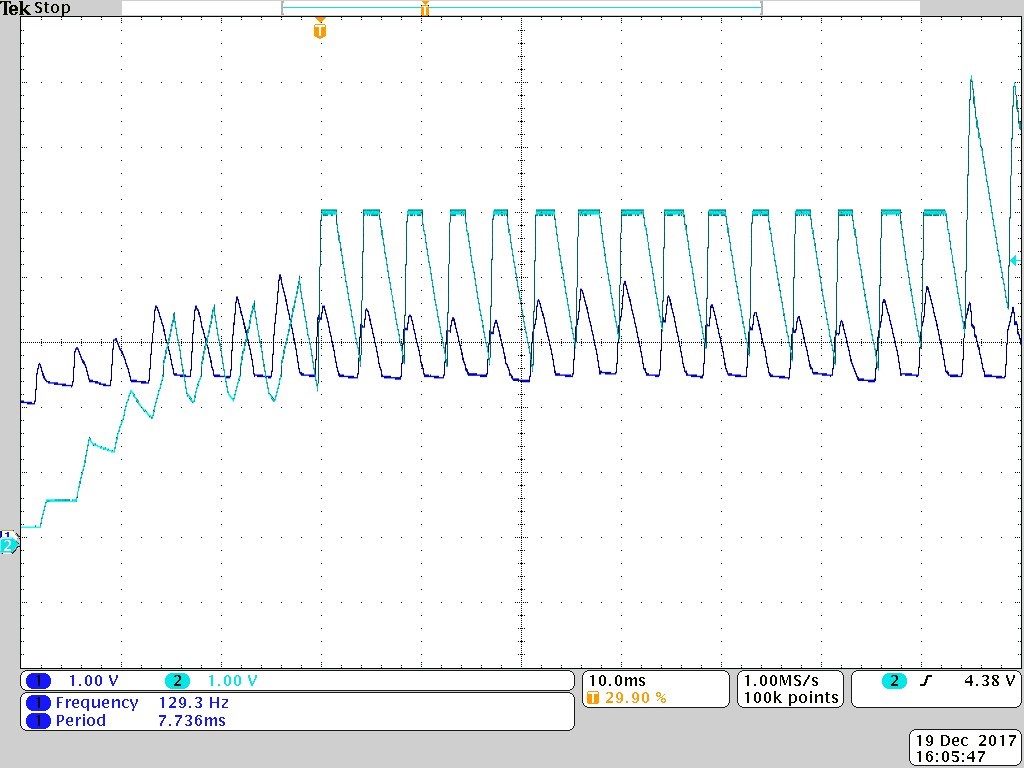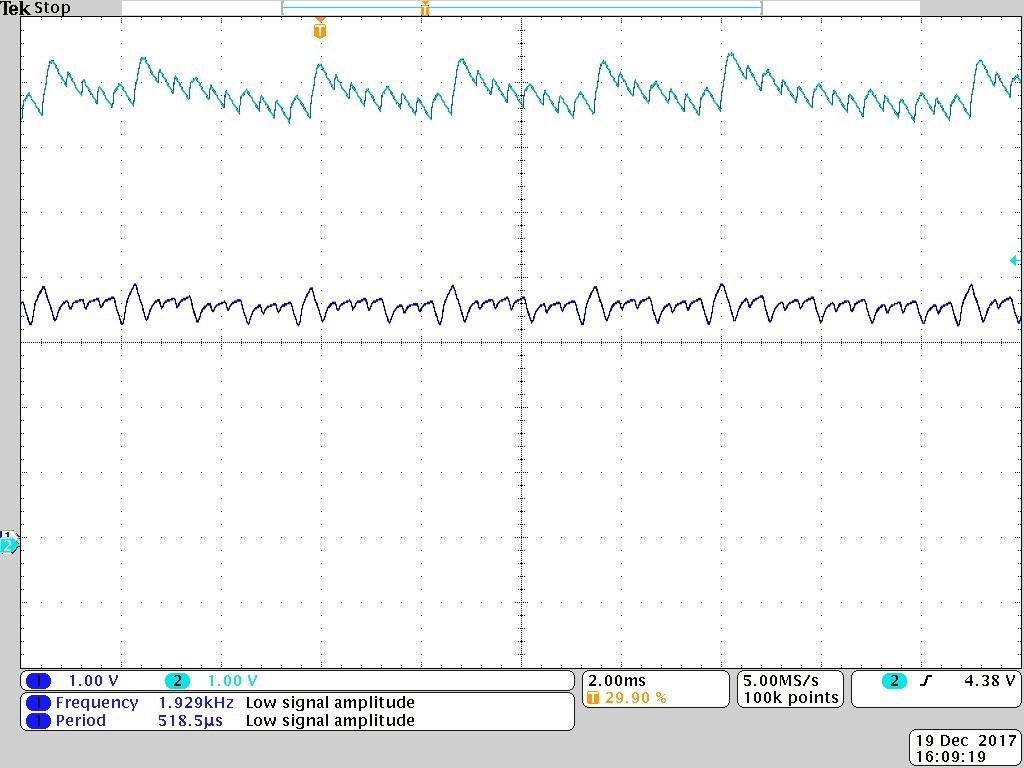Other Parts Discussed in Thread: ISO1541, TCAN1051, TPS2114A
Hello,
I have a circuit using three ISOW7841 to provide independently isolated interfaces. One of the circuits is shown below (the other two are identical as far as the power rails go).
If the +5V_C rail starts cleanly then the ISOW7841 regulates nicely at +5.0V. However if +5V_C oscillates during startup (due to current limiting the input supply), then the ISOW7841 can end up regulating at +7.0V, even after the input has become stable. This could be the breakdown voltage of the 5V TVS on the output, or the ISOW7841 regulating at this voltage, but it is a very well regulated rail with almost no noise or ripple.
The only way to get the output voltage back down to +5.0V is to power cycle the circuit. The ISOW7841 is undamaged, and operates correctly after providing a clean startup.
I am working on some modifications to ensure that the input voltage is stable during the startup of the ISOW7841, but I would also like to know if there is anything else I can do to prevent the ISOW7841 from regulating at such a high voltage?
Thanks in advance,
Hayden Gray





